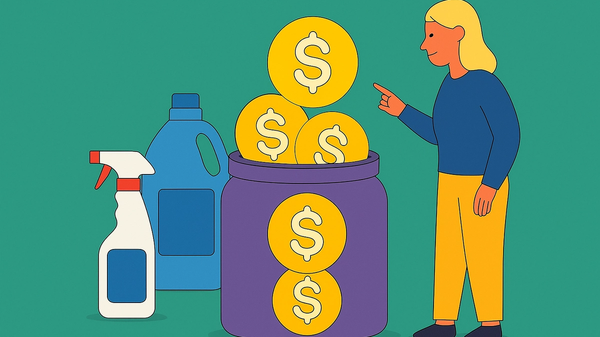Highlights:
- Get a full year of growth in your TFSA by contributing early
- How to avoid accidentally overcontributing
- Use next year’s TFSA contribution to generate interest
Several years ago I made it a priority to max out my TFSA.
(And if you’re more focused on your RRSP, you can use the same strategy outlined here for that too!)
Now when January rolls around, I want to fill up the year’s contribution pronto.
Problem is, I’m normally scrambling to come up with $7000 that isn’t already earmarked for something.
Plus, there’s talk about how the limit might be raised to $7500 for 2026 - we’ll see!
This year I’ve gotten smart about it - and now have a strategy to be ready for January.
Why top up at the beginning of the year?
I do dollar-cost averaging where I regularly contribute to my RRSP and margin accounts throughout the year.
But for my TFSA, I like making one lump-sum contribution. It’s easier to manage since I’m so close to the limit, and I don’t want to accidentally overcontribute and end up paying a penalty.
Plus, studies have shown that lump sum contributions outperform dollar-cost averaging 68% of the time.
One big lump sum instead of spreading it with smaller contributions over time gives your money more time in the market - creating more opportunity for growth.
How to get next year’s contribution ready
Going on the assumption that we’ll get $7000 of contribution room next year, this is my plan.
- I created a new high-interest savings account in my bank and called it TFSA Prep
- Each month I contribute $600
- By January, I’ll have $7000 ready to go!
And it gets even better
I could leave it at that, but I saw an opportunity to make even more interest.
With the interest rates falling, high-interest savings accounts aren’t what they used to be.
- Use short-term GICs to generate even more interest
- Stagger GICs based on how much time you have left before you need the money in January
- Use 9, 6, and 3-month GICs to maximize interest
When the GICs are finished, they deposit into my TFSA prep account so all my money is ready to go!
The rest of the year, I’ll be happily dollar-cost averaging
DCA helps reduce the risk of buying at a high point, since you’re spreading out your purchases over time and catching both the ups and downs.
Using both lump-sum and DCA strategies gives the best of both worlds 🌎
Plus, it’s so easy with Passiv!
I make my monthly contribution into my brokerage, and Passiv takes care of the rest.
In 1 click my money is invested according to my ideal portfolio - no spreadsheets, calculations or stress.
Find out more about how Passiv makes investing easy!


